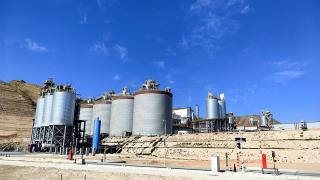Following the Paris climate agreement (2015), the decarbonisation of the energy and industrial sectors is becoming increasingly important. One of the most significant measures to achieve the climate targets is to reduce carbon dioxide (CO2) emissions. The capture, use and storage of CO2 is an essential part of the decarbonisation strategy and an important milestone for a low-carbon future. By Aurélie Moll and Felix Bartknecht, SICK, Germany.
Some carbon capture, utilisation and storage (CCUS) pilot projects have already been successfully completed in Germany and worldwide over the last 10 years. These projects have proven that carbon capture from flue gases is an appropriate solution to reduce industrial emissions. As a result, equipment suppliers involved in these pilot projects, such as Germany-based SICK, have gained important knowledge on the use of measuring technologies and their optimal calibration. As for emission monitoring, continuous measurement techniques are required for controlling and monitoring all CCUS processes (see Figure 1). The gas quality (concentration) is monitored with gas analysers and the CO2 volume is determined using gas flow measurement equipment.
